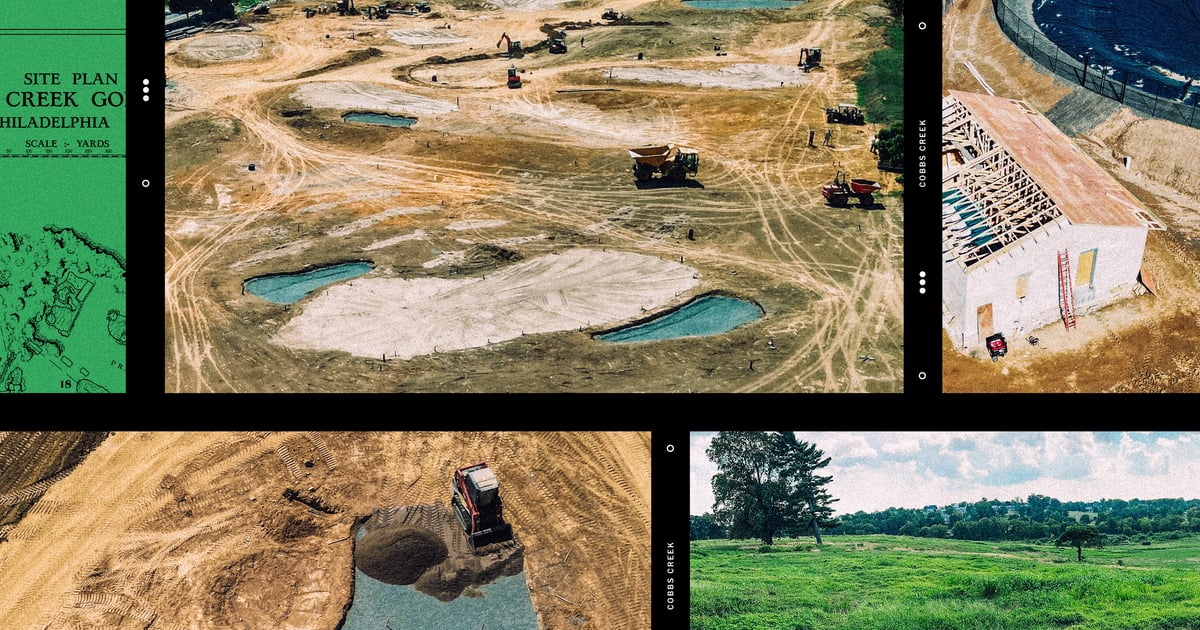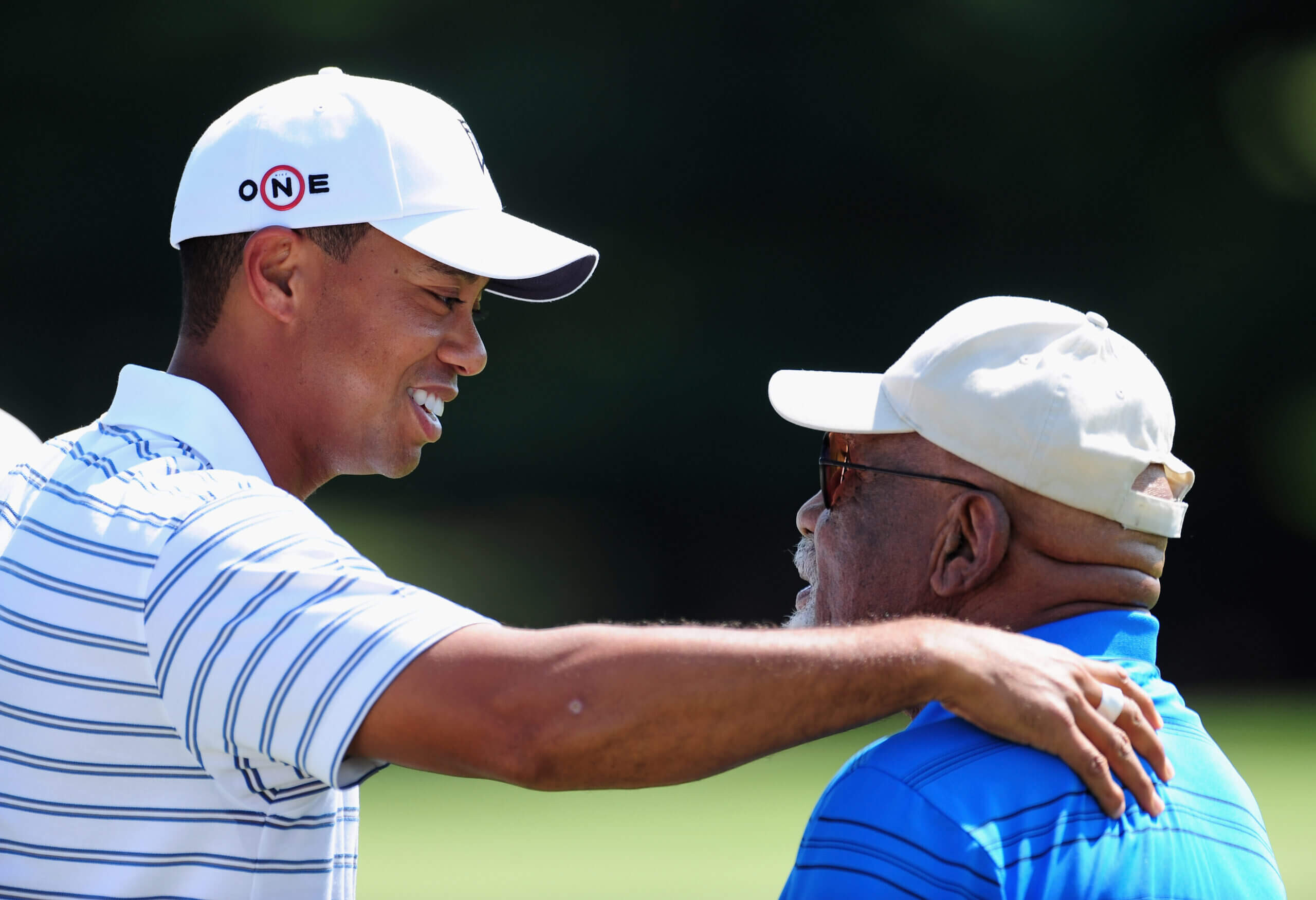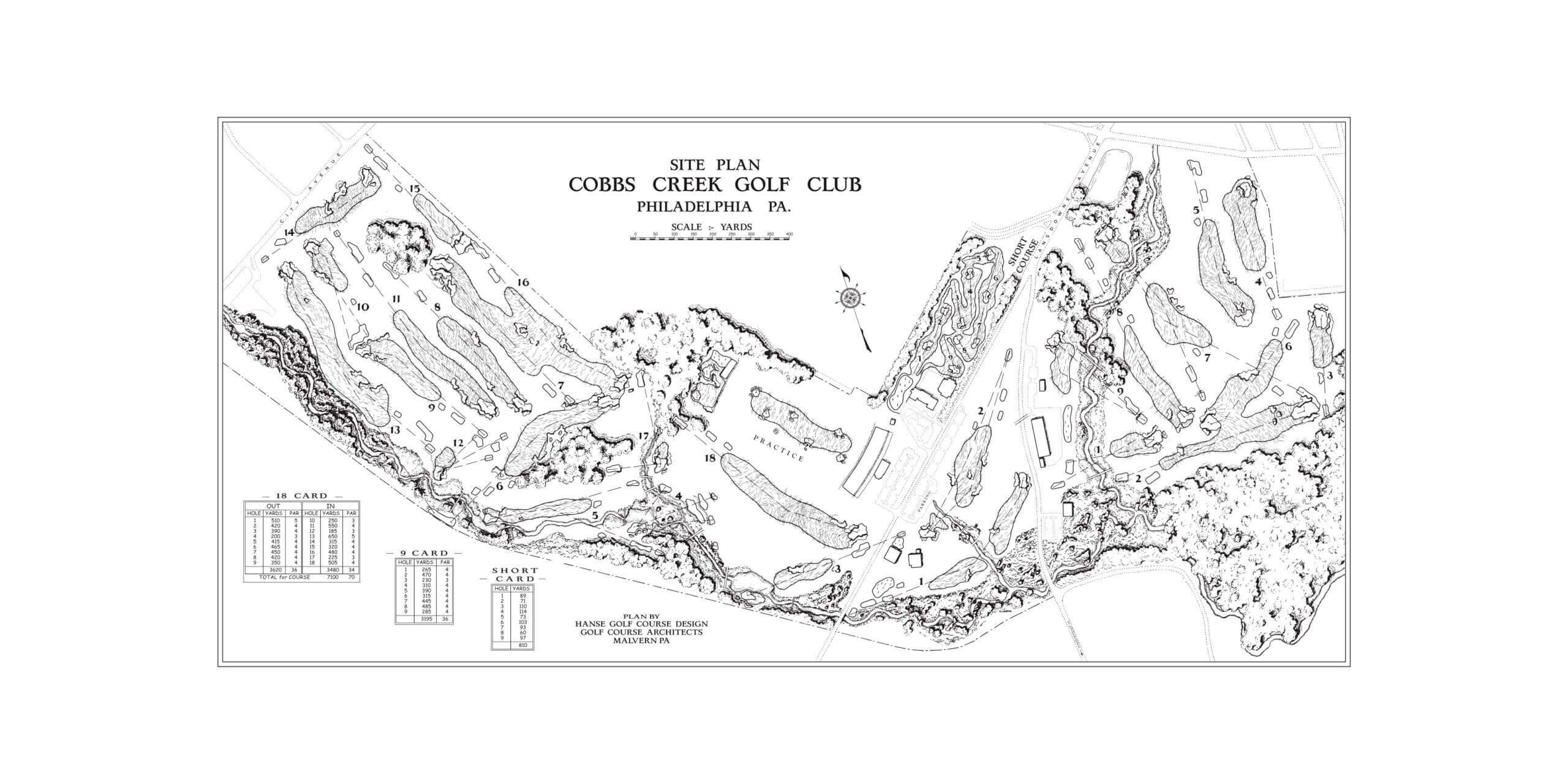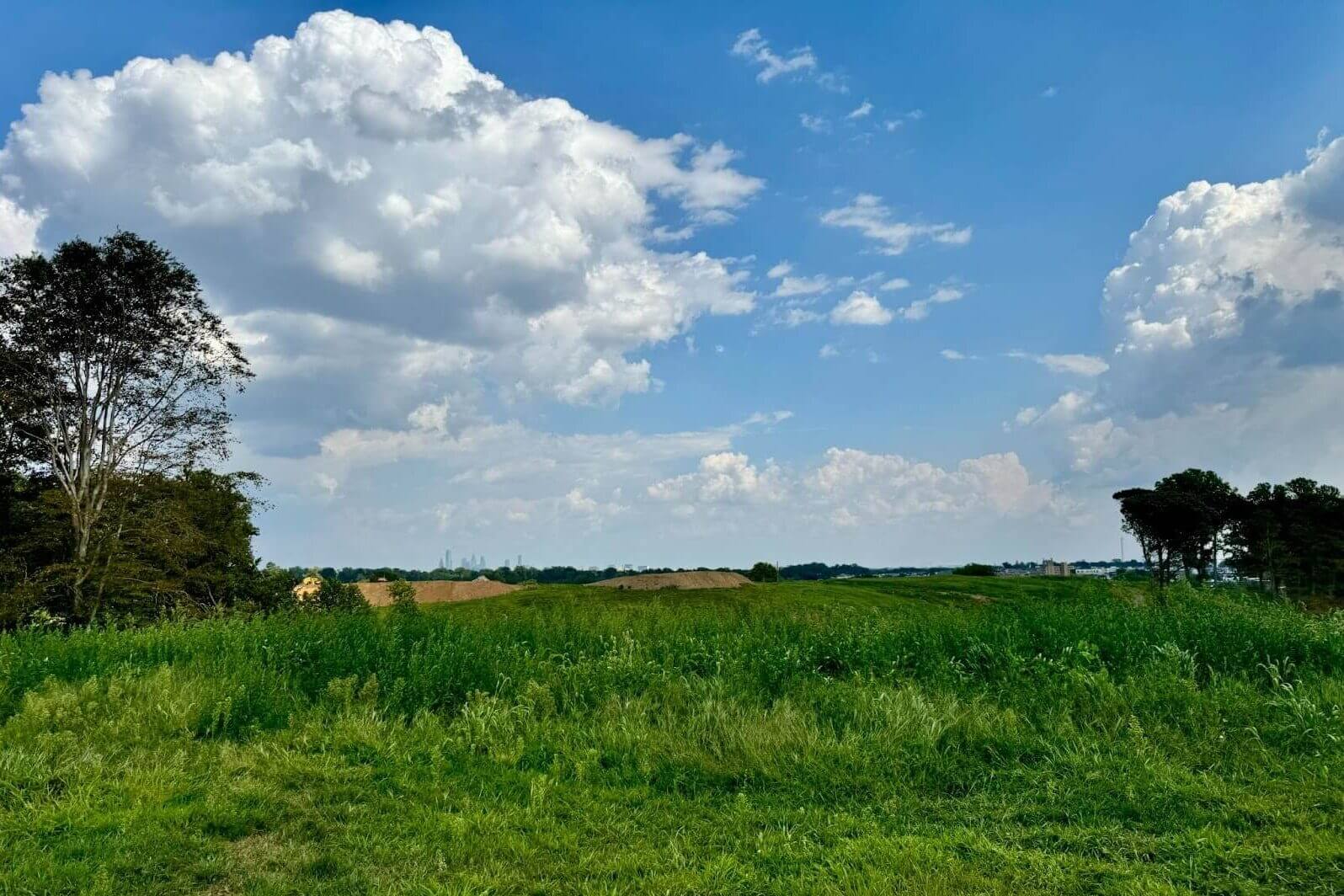
Editor’s note: This article is part of The Changemakers series, focusing on the behind-the-scenes executives and people fueling the future growth of their sports.
PHILADELPHIA — From the eastern boundary of Merion Golf Club, water flows southeast along the property, cutting inward across the 12th hole, framing the famed 11th green, where Bobby Jones clinched the 1930 Grand Slam. Veins of tributaries shoot from the stream, slicing through the course. One sidles up to the fifth fairway, what some consider the best par 4 in the world. Everything about Merion is immaculate. Generations of wealth in this city have assured so. Shaping, reshaping. Renovating, restoring. Installing a multi-million dollar underground turf conditioning system.
The water moves on from Merion, meandering alongside estates with houses set far off the street. It flows out of Haverford toward Ardmore, along roadsides and lawns, into Penn Wynne, and cuts through Powder Mill Park in Wynnewood.
Then comes Township Line Road, the stretch of Route 1 that divides Philadelphia from its western suburbs. The water ripples underneath an overpass, entering the city, and flows past a shuttered driving range. A little further, it zigs and zags through the remains of a municipal golf course, past the site of an old clubhouse, one that burned down in 2016. Connected to the same creek as Merion, built by the same architect who designed Merion, once praised in the same breath as Merion, Cobbs Creek Golf Club is now a ghost. Overgrown and unrecognizable. Nature has reclaimed what history created and time neglected.
Two sides of the street, two versions of the same game, four miles apart.
Anywhere else, Cobbs, as it’s known, might’ve been left for dead years ago. The last time it was operational, dying trees, severe erosion and holes in various stages of disrepair made it not only unplayable, but borderline unsafe. Without a clubhouse, the course operated out of two double-wide trailers. It closed in October 2020.
But there had always been these rumors. Anyone familiar with municipal golf in a major city knows the kind. Chatter of some magnificent renovation, the kind that might bring Cobbs back to its original glory and give the public a place as nice as the private clubs. The buzz began what seems like forever ago, back in the early aughts. Word that a nonprofit group was working to save Cobbs. We talked about it while sitting around the old plastic tables in what was the clubhouse. And in the parking lot, where the old-timers sat around in folding chairs with cards in their hands and coolers in their trunks. And around the first tee box, where foursomes stacked up, being told which holes had temporary greens due to flooding, before being sent out five minutes apart for a five-hour round.
Everyone wondered the same thing. What if?
For all its issues, Cobbs Creek carried an unmistakable mystique, even in the end. You didn’t need to squint to see the quality of the design. The land is shaped by features money can’t buy — elevation, natural water flow, vistas, a rail system rolling past. The original 18 holes opened in 1916, immediately establishing Cobbs among the country’s premier public golf courses. A century later, that old layout is referred to only as “the bones.” They’re down there, somewhere.
When the course closed, the non-profit Cobbs Creek Foundation, comprised of local corporate executives and golf architecture enthusiasts, took over the facility in a private/public partnership. At first, the scope was confined to restoring the course and providing an educational program for young people in the surrounding neighborhood. Price tag: Roughly $20 million. Proposed opening date: June 2023.
Two years later, in 2022, that plan was no longer tenable. Work to lower the creek’s floodplain came with endless other hurdles. Between necessary approvals from the U.S. Army Corps of Engineers and the Pennsylvania Department of Environmental Protection, along with countless other state and federal organizations, the project grew exponentially. The Cobbs Creek Foundation signed a 70-year lease for $1 to take over the property and mapped a new plan. This one required rebuilding over 3 miles of creek and tributaries, creating dozens of acres of wetlands, fully renovating Cobbs’ original 18 holes, creating a new nine-hole course, a driving range and a short course, and building a youth education center. Price tag: Roughly $65 million. Proposed opening date: Sometime in 2024.
As it goes in Philadelphia, skepticism built and controversy grew. The clearing of several hundred trees drew outrage from environmental organizations and neighborhood groups. Improper campaign contributions from the foundation to a local councilman drew blowback. Multiple stages of project planning were stunted by denied permits, delaying steps until approved.
There was every reason to see Cobbs’ return as a pipe dream.
Except now, along Lansdowne Avenue, stands the framework of what will be a 30,000-square-foot building. It will be the country’s second TGR Learning Lab, an education center operated by Tiger Woods’ TGR Foundation, where over 4,500 local youth will receive year-round Science, Technology, Engineering and Math (STEM) education and college readiness programs. In front of the building, bulldozers are kicking up dirt, building a nine-hole, par-3 short course. Both are expected to open spring 2025. Nearby, land is being prepped for a two-story driving range that will include a restaurant, pro shop, area for community events and a museum. That’s also where a junior putting green will be installed, courtesy of a $250,000 grant from Jordan Spieth’s family foundation.
Seeing this in person is mind-bending to anyone who came up playing Cobbs. Knowing what’s coming next is even more so. The course renovation and wetland installation is scheduled to begin next summer. An additional new 9-hole course will follow.
New price tag: $150 million, of which $100 million has been raised. Final completion date: 2027.
In the end, if this works, Cobbs Creek will operate as a financially self-sustaining nonprofit that funnels educational opportunities into the community, offers local residents affordable play, and will perhaps bring a PGA Tour event to the city. It all makes one wonder, if a game so long-tied to barriers can be co-opted by those who want it to be something different, and if land that’s tied to one story can suddenly tell another — if that kind of change is possible, then what isn’t? And where else can public golf be reimagined?
In the early 1990s, as Cobbs slipped into an escalated decline, about to be passed around by various management companies for the next three decades, Merion weighed a heavy decision. The club was set to host the 1994 Women’s U.S. Open but was rattled by a new USGA policy stating all clubs chosen to host national championships must feature inclusive membership policies. Merion hired a consulting firm to survey its all-White membership, asking if the club should consider integration. The membership couldn’t commit to having minority members by tournament time and Merion withdrew as host of the national championship.
Shocking, yes. Surprising, no. Aronimink Golf Club, another elite private club in the Philadelphia suburbs, withdrew from hosting the 1993 PGA Championship because of an all-White, all-male membership. Pine Valley, the top-ranked golf course in the U.S., about 20 miles outside Philly, did not open its door to women until 2021.
Policies aside, these courses, along with plenty other elite clubs dotting the tri-state area, are products of a merry band of early-20th-century golf course architects known as “The Philadelphia School.” They worked with and occasionally for each other. A.W. Tillinghast, George Crump, George Thomas and Hugh Wilson, along with Boston transplant William Flynn, all helped shape much of the Golden Era of course design in the United States.
But today almost all their courses come with high hedges. Places you can’t see into. Places the membership doesn’t necessarily want to see out of.
Cobbs is the exception. In 1914, when the Golf Association of Philadelphia pegged Wilson to lay out the city’s much-needed public course, the 35-year-old was fresh off designing 36 holes at Merion, including the acclaimed east course. His work was a product of both natural genius and thorough study. Wilson, a product of Philadelphia high society and a Princeton education, began his design career traveling across Great Britain to research the game’s greatest layouts — St. Andrews, Prestwick, Muirfield, North Berwick, Hoylake. On and on. According to family lore, he was originally ticketed to return to the U.S. in the spring of 1912 aboard the Titanic but missed departure.
Wilson’s design of Cobbs Creek was both classic and imaginative. He tabbed Flynn, who later created the likes of Shinnecock Hills, Cherry Hills and Lancaster Country Club, to personally build every green and every bunker. From Day 1, the course was heralded as a triumph of public golf. It was open to juniors, first-timers, working-class players, women and minorities.
When some wonder why Cobbs is worth saving, the answer is not only its design, but its place in the history of a sport so steeped in exclusion.
In 1940, Charlie Sifford, then a 17-year-old caddie in Charlotte and 21 years away from being the first Black man to gain membership to join the PGA Tour, jumped town after an encounter with a drunken White store owner who levied threats and racial slurs at him. In his 1992 biography, “Just Let Me Play,” Sifford recounted smashing a Coke bottle across the man’s face and knowing he’d never get a fair trial in Jim Crow South. He instead hopped a train to Philadelphia, where he heard the jobs were available and the golf was good.
Sifford moved in with an uncle in North Philadelphia, not far from what’s now Temple University, and landed a job as a shipping clerk at the Nabisco plant. One weekend, with a fresh paycheck, Sifford spent a long night playing poker, emerging early on a Sunday morning to find a rising sun. Outside, he saw a man catching a street car with a golf bag slung on his shoulder. From “Just Let Me Play”:
“Say, where you going with them clubs,” I called out to him.
“I’m going to Cobbs Creek,” he called back over his shoulder.
“Where’s that?”
“It’s all the way out to the end of the Market Street trolley.”
Sifford joined the man and made his way to Cobbs. He later wrote: “The course was intended for everyone to use, and I was both surprised and delighted to see both black and whites playing side by side there. I’d never seen anything like that in North Carolina.”
At the time, Cobbs was already well-established as a haven for Black golfers. Howard Wheeler and others called the course home well before Sifford. The United Golf Association (UGA), founded in the mid-1920s to provide minority golfers with an opportunity to compete on an organized tour, hosted its national championship at Cobbs in 1936, 1947 and 1956. Heavyweight boxing champion Joe Louis played at Cobbs. So did trailblazers Lee Elder and Ted Rhodes. In 1961, the Philadelphia NAACP hosted a tournament at Cobbs Creek to raise funds for the Freedom Riders jailed in Mississippi that summer.

The relationship between Tiger Woods, left, and Charlie Sifford drove Woods to be a part of what is happening at Cobbs Creek.
Cobbs meant so much to so many, and served so many different needs to so many different backgrounds, but, like any municipal course, was vulnerable. Heavy play exceeded reasonable usage. Conditions slipped. For years, it was also used as a cross-country course. Those hills punished generations of runners.
Around 1952, in the throes of the Cold War, the U.S. Army scouted multiple sites around Philadelphia to install anti-aircraft batteries. The location chosen? The 13th green of Cobbs Creek. Massive silos were dug and the course was rerouted around the installations. Six years later, the Army filled in the silos and left a vacant expanse behind. Cobbs’ routing was never returned to Wilson’s original design.
In time, a driving range and batting cage facility was built atop the old anti-aircraft installation. The City Line Sports Center, controlled by the same various management companies as Philly’s public golf courses, would end up, in time, just as run-down as Cobbs.
By the turn of the century, Cobbs was little more than a portrait of neglect. Floodwaters washed away greens in the spring. The sun baked out fairways and tee boxes in the summer. The Karakung Course, a second 18 built on the property in 1927 by Abner “Ab” Smith, was somehow worse. A string of superintendents did with it what they could, but no effort could overcome a staggering deficit of resources. The property deteriorated. Vandalism went ignored. Occasional abandoned cars were dumped here and there.
In time, what once was faded from view.
A few weeks ago, on a Monday morning in Philadelphia, Enrique Hervada and Don Dissinger sat in a far booth inside the Llanerch Diner on Township Line Road. The two are current proxies for reams and reams of people who’ve taken on the Sisyphean group effort to complete Cobbs Creek’s reclamation.
Hervada, COO of the Cobbs Creek Foundation, is one of seven full-time staff members. He’s among those trying to raise the final $50 million of what’s ballooned to a price tag three times that number. At least $30 million will be spent fortifying the creek and creating wetlands to prevent flooding both on the course and in the surrounding neighborhoods.
“It might kill us by the time we’re done,” Hervada said over breakfast. “It’s just — it’s a massive project cost-wise and permitting-wise.”
Hearing this, Dissinger put his fork down. “You have no idea,” he said. The 70-year-old quasi-retired architect and engineer was overseeing the construction of two high-rises in Miami when the foundation called him in December 2022. Having helped in the restoration of Merion Golf Club in 2014, Dissinger was an ad hoc member of the Cobbs restoration committee. But the foundation needed more.
A former partner at the design firm EwingCole, Dissinger built Citizens Bank Park in Philadelphia and MetLife Stadium in East Rutherford, N.J. His career has been one of municipal red tape, zoning laws, and state and federal licenses. But with a property covering 350 acres, and touching three counties (Philadelphia, Montgomery and Delaware), he’s never seen anything quite like the project at Cobbs Creek.
“The number of permits I have on this exceeds the number of permits I had between those stadiums — combined,” Dissinger said.

(Courtesy Cobbs Creek Foundation)
This all began years ago, around 2007, with a few hobbyists digging into archives, retracing Cobbs’ history and comparing notes online. These early archivists, notably Dr. Joseph Bausch, a chemistry professor at Villanova University, and Mike Cirba, an Information Management Executive, planted the seeds of what became the Friends of Cobbs Creek. Two idealistic outsiders (Bausch from Indiana, Cirba from Northeast Pennsylvania), they became, as Cirba puts it, “obsessed with what it was and what it could be.” The two began compiling information into a book. Today it is up to 400 pages long, in its 12th volume, and is the source material for everything written about Cobbs Creek, including much of this article.
In those early days, Bausch and Cirba thought it was obvious what needed to happen. Then they met Philadelphians.
“And there was always a sense that this can’t happen here. It was a pervasive negativity,” Cirba says. “I think we came into it with a certain level of naiveté, but that was probably a good thing.”
Bausch and Cirba held the earliest meetings with City of Philadelphia officials about saving and renovating the course. They were told, great idea, but where’s the money?
A board was formed. Interest grew from powerful, connected local businesspeople, including Cobbs Creek Foundation founding CEO Chris Lange and president Jeff Shanahan, along with Chris Maguire and the Maguire Foundation. The group grew larger and ideas got bigger.
Cobbs and the TGR Foundation came together. Since 2006, Woods’ charitable arm has operated a year-round learning lab in Anaheim, Calif., offering over 30 classes and workshops for 5th-12th grade students. According to TGR, 98 percent of its scholars graduated from high school and enrolled in college, 91 percent of whom were first-generation college students. Woods, himself, was familiar with Cobbs Creek even before the partnership. Charlie Sifford, he has said, was like a grandfather to him. Woods named his only son after Sifford.
Somehow, now, the thought of restoring 18 holes feels almost peripheral. The foundation hopes to serve 4,500 local students a year. The property is now referred to in two parts — as a course and as a campus.
Sitting in his office at Villanova all these years later, Bausch can only shake his head. “I always thought that this was going to be an incredible project,” he says, “but it has far exceeded anything I could ever imagine.”
There is, though, the matter of that golf course.
Appropriately, two locals are handling what comes next. Hanse Design — the renowned golf architecture firm of Gil Hanse and Jim Wagner — is based in Malvern, about 15 miles from Cobbs.
Wagner grew up nearby, playing Cobbs as a high school golfer at Cardinal O’Hara. Hanse is a transplant, but knows the territory. Before his firm handled high-profile restorations like Merion, Aronimink, Oakmont and Winged Foots, Hanse developed a soft spot for the West Philly course. A little-known architect at the time, he rebuilt Cobbs’ third and fourth greens in the early 2000s after extensive flood damage. He did it for free.
That pro bono work will now continue in 2025 through 2026. Hanse and Wagner will not only rebuild Cobbs Creek Golf Club to Hugh Wilson’s original design, but will also lay out the new nine-hole course on the old Karakung land.
The scale of the project is immense.
On my recent visit, I stood near the old 12th tee box, scanning an area that once included the 11th green, the 13th green and crowded and long views of tree-lined fairways. If I didn’t personally know what had been there, I wouldn’t believe it. Anyone imagining a “restoration” is misguided. The original Cobbs Creek is gone, reclaimed by the land.

What remains of the view from the 12th tee box at Cobbs Creek. (Brendan Quinn / The Athletic)
“You can’t put it back,” Wagner said. “It’s impossible to put it back to what it once was because so much has changed in the environment. Mother Nature came in and moved things around.”
But you can return the intention and objective of what the golf course was meant to be. At last, that’s happening. Something bigger than anyone in Philly ever imagined. Something just as nice as all those private courses, except open for all.
Today, this ground is in Philadelphia. But if a successful model is created at Cobbs Creek, combining golf and STEM education under a non-profit, self-supporting model, other cities might have to sit up and take notice. Chicago. Detroit. St. Louis. Los Angeles. Houston. Maybe they’ll see the municipal course that time has forgotten and see something different. Maybe times can change.
The Changemakers series is part of a partnership with Acura.
The Athletic maintains full editorial independence. Partners have no control over or input into the reporting or editing process and do not review stories before publication.
(Illustration: Dan Goldfarb / The Athletic; Photos: Courtesy Cobbs Creek Foundation, Brendan Quinn / The Athletic)